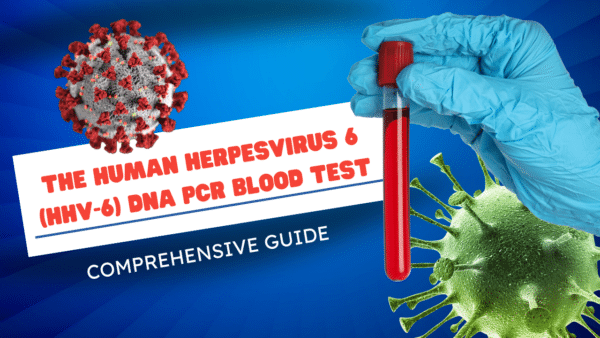A hemoglobin test is used to determine the amount of hemoglobin present in the blood. Hemoglobin is a substance responsible for the red color of the blood. It is a type of protein present in the red blood cell that transports oxygen to essential parts of the body like lungs and tissues. The hemoglobin also helps carry carbon dioxide from various body parts back to the lungs.
When the hemoglobin level is down, it is likely a sign of an illness or disease. When the hemoglobin level is low, the body might be weak due to reduced energy for optimal functionality.
A hemoglobin blood test might be required by your doctor if there are issues with your health. Most times, however, it is usually part of a routine checkup.
Anemia is a condition in which someone has low levels of red blood cells. This is usually when an HGB test reveals that the levels of hemoglobin are lower than the ideal range. There are various causes of anemia, like poor nutrition, chronic disease, bleeding, vitamin deficiency, etc.
On the contrary, one might have a hemoglobin level higher than the average level. Typical causes are smoking, excessive dehydration, and people living or frequently staying at a high altitude could be prone to this.
Why do you need to get a Hemoglobin Test?
A complete blood count involves many essentials, and a hemoglobin blood test is one of the requirements. As a result, one might need to have an HGB test as part of the routine physicals, even if there are no glaring symptoms of hemoglobin issues.
It is also part of the standard screening given to newborns.
There are, however, times when doctors might request a hemoglobin test for specific reasons. There are some symptoms consistent with hemoglobin issues in the body. Showing persistent signs of one or more of the following might require a hemoglobin test:
- Dizziness
- Excessive trauma
- Bruising
- Generalized weakness
- Presence of blood in the stool or urine
- Excessive vomiting
- Jaundice
Here are reasons one might need to have a hemoglobin test:
A diagnosis for Medical Issue: People experiencing any of the symptoms listed above will probably be advised to take a hemoglobin test. Some of the signs above might be a pointer to anemia. With the test, one can confirm if it is anemia or any other medical issue.
To Ascertain the Overall Health: One might be required to get a hemoglobin test during a general medical examination as one of the routine medical exams to check the overall health. The test also helps check for a series of issues like anemia.
To keep a tab on a medical condition: Someone diagnosed with any medical disease like polycythemia vera or anemia might require a periodic HGB test. This helps monitor the situation in a bid to allow the doctor to know the treatment approach.
Interpreting the Result
If you have taken any blood tests before, the procedure is pretty similar. You do not need any elaborate preparation. In many cases, your finger will be pricked, and your blood sample collected. There are times your result might be ready instantly. At other times, it takes a maximum of two days for you to have your result.
In interpreting the result, the doctor will typically consider your medical history, any physical examination, or other tests.
Also, the interpretation of the HGB test result will be along with other blood test results.
Healthy Ranges for Hemoglobin Test
Reference Range for a Hemoglobin test
| Hemoglobin Test For | Estimated Range |
| Children | 11 – 16 g/dl |
| Pregnant Women | 11 – 12 g/dl |
| Women | 12.0 – 15.5 gm/dl |
| Men | 13.5 – 17.5 gm/dl |
Worthy of note is the fact that the healthy ranges for kids vary. Most time, it is a factor of age and sex. Also, the range might differ between different medical practices. One needs to understand that hemoglobin level less than 7 g/dl or greater than 21 g/dl are critical values
For kids and children, here are the ranges:
- Newborn: 14 to 24 g/dl
- 0 to 2 weeks: 12 to 20 g/dl
- 2 to 6 months: 10 to 17 g/dl
- 6 months to 1 year: 9.5 to 14 g/dl
- 1 to 6 years: 9.5 to 14 g/dl
- 6 to 18 years: 10 to 15.5 g/dl
Low hemoglobin and Causes
When the body cannot produce enough hemoglobin or RBC production reduces, one will have low hemoglobin levels. This occurs when hemoglobin levels fall out of the lowest limits specified for the age range and sex, as indicated in the table above.
For instance, a 30 years old man with an HGB test of 12.0 is said to have low hemoglobin. Some of the symptoms of low hemoglobin levels are
- Pale skin
- Shortness of breath
- Cold hands and feet
- Irregular heartbeat
- Fatigue
Some of the causes of low hemoglobin are:
- Cancer
- Chemotherapy treatment
- Kidney disease
- Radiation treatment
- Other anemia causes
- Malaria
- Some medications
- Liver disease
- Iron deficiency
Health issues such as sickle cell disease and thalassemia might result in low HGB levels when the red blood cell count becomes critically low when having a crisis.
Donation of blood also brings down the hemoglobin level. This, however, will normalize a couple of weeks later.
High Hemoglobin level Causes
In contrast to having low hemoglobin levels, the body at times makes excessive red blood cells. Also, when the body’s fluid level is too low, it causes dehydration, which can raise the hemoglobin level.
However, excessive production of red blood cells might be the body’s endeavor to compensate for an abnormality like a heart issue or lung problem. It is still an indication of poor health.
A condition of high hemoglobin level is called polycythemia. Some symptoms of the issue are:
- Tiredness
- Bloated spleen
- Shortness of breath
Here are some of the causes of elevated hemoglobin levels:
- Smoking
- Dehydration
- Liver disease
- Problem with the lungs
- Residency at a high altitude
- Hard and demanding exercise
- Congenital heart disability that disrupts the flow of oxygenated blood
The risk involved with a hemoglobin test
HGB blood test comes with some non-life-threatening risks that one needs to be aware of. Different people have various sizes of arteries and veins. Also, the scope and nature of veins vary from one body part to the other. As a result, it might be quite challenging to obtain some people’s blood samples compared to others.
Here are other slight risks that come with withdrawing of blood:
- Too much bleeding
- Lightheadedness
- Excessive punctures in searching for the vein
- Infection due to broken skin
Conclusion
A hemoglobin test could be part of the standard medical procedures that medical practitioners will need to examine the health of a patient. It is a test to determine the levels of red blood cells in the body – a significant indicator of how healthy an individual is. Hemoglobin levels in humans can be high or low. They all depend on specific factors that have been discussed in the article.
You can order a Hemoglobin A1C Blood Test online.
Reference
Amber, H. (2020) What Is a Hemoglobin Test? Retrieved from https://www.verywellhealth.com/hemoglobin-level-test-1942658
Danielle Dresden (2020) What is an Hgb blood test? Retrieved from https://www.medicalnewstoday.com/articles/hgb-blood-test
Mayo Clinic Staff (2019) Hemoglobin Test. Retrieved from https://www.mayoclinic.org/tests-procedures/hemoglobin-test/about/pac-20385075




